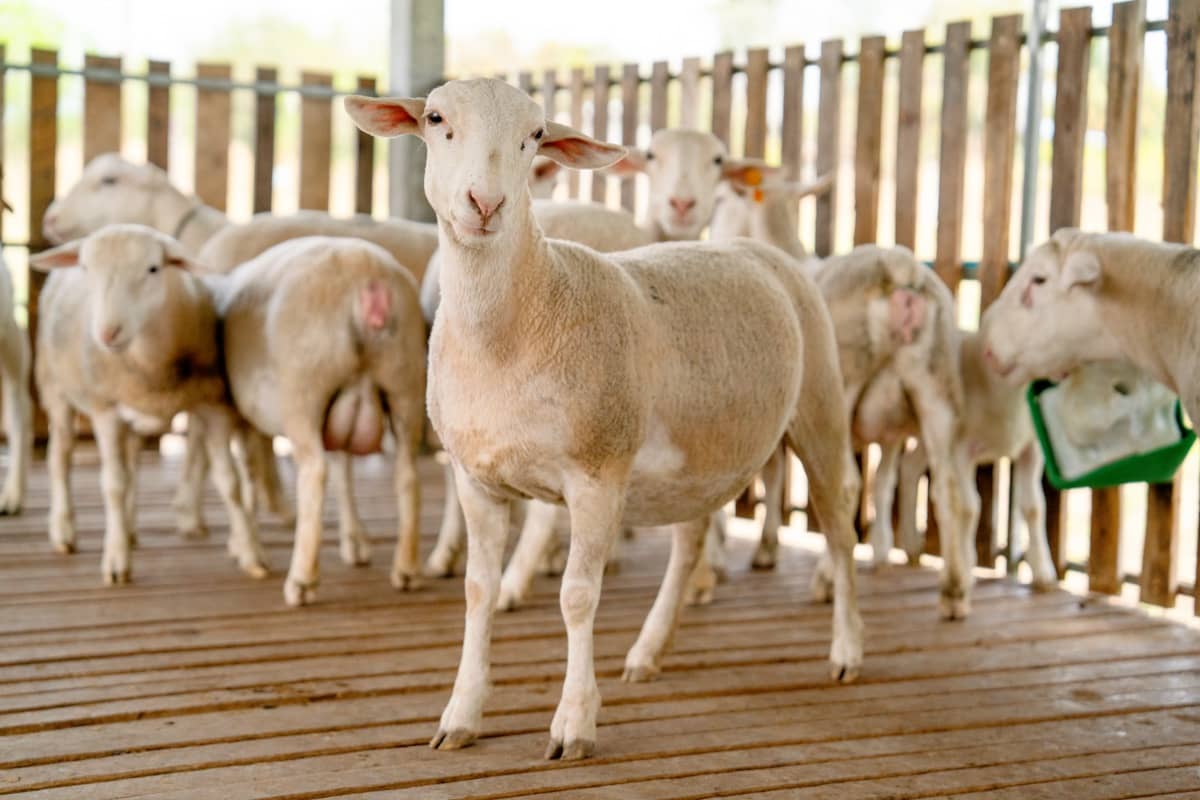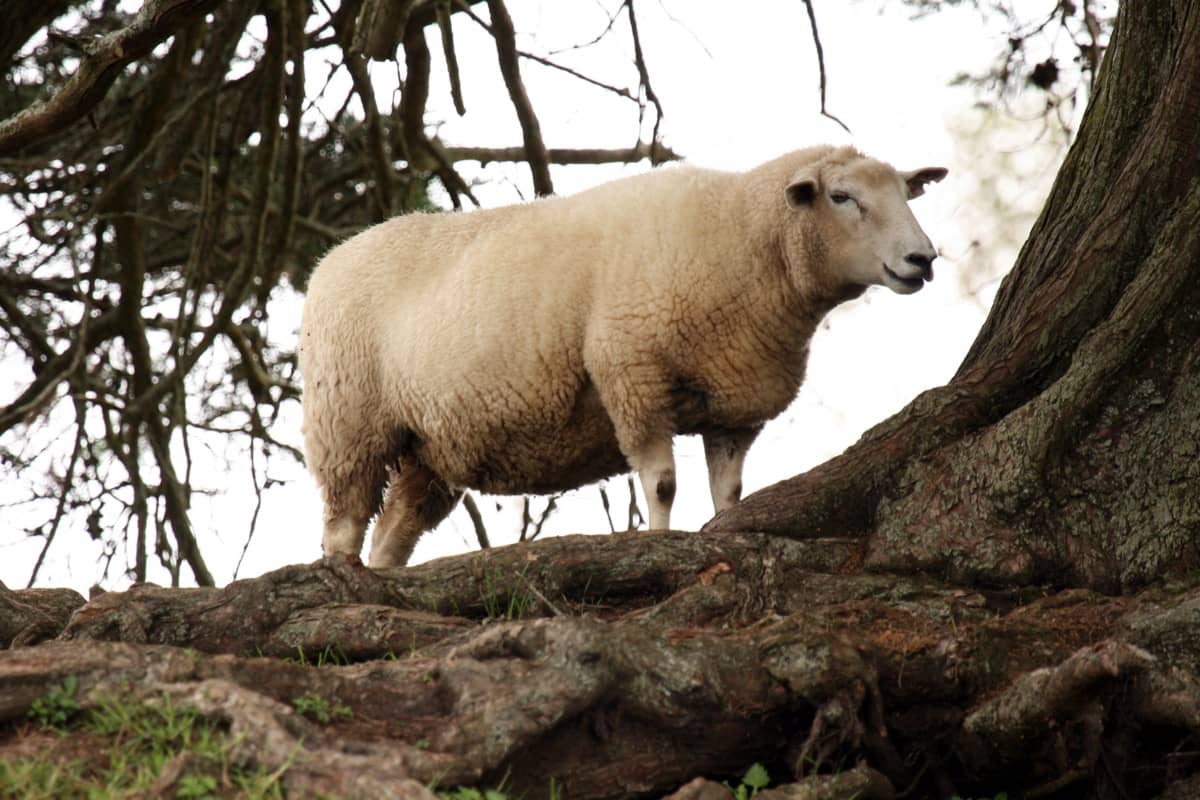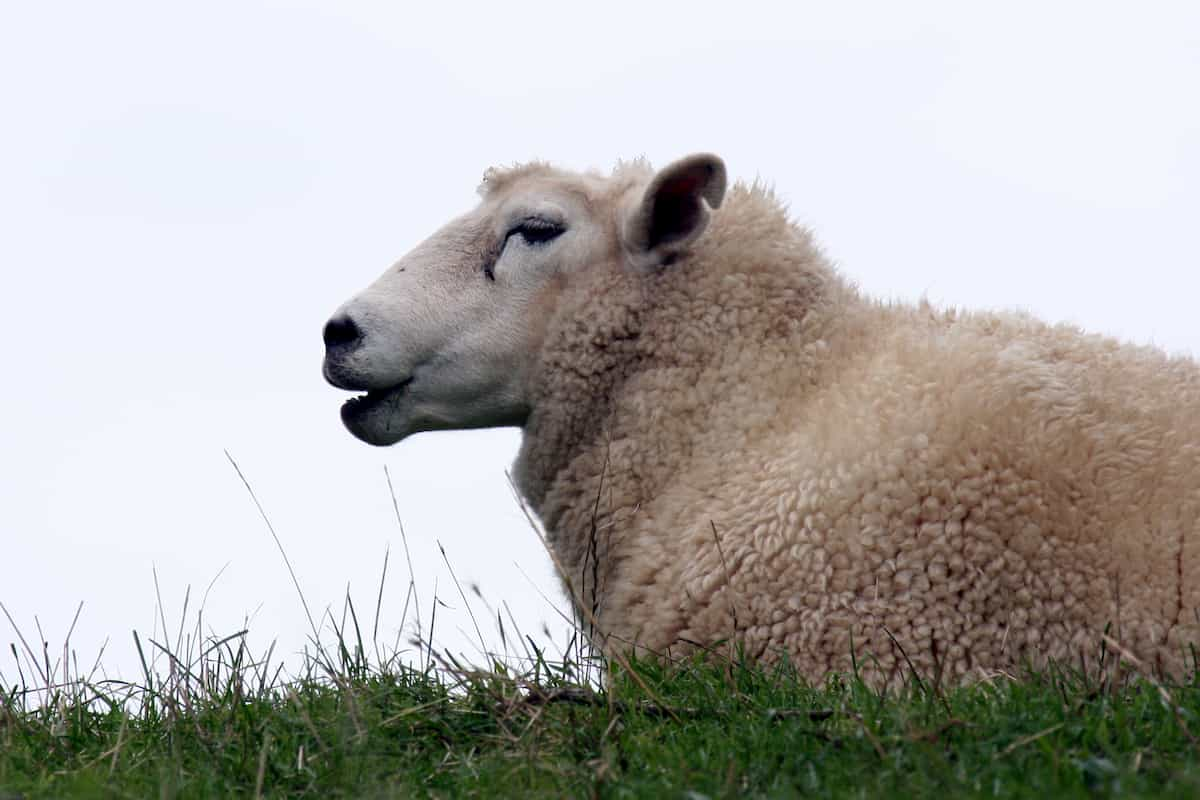The Rideau Arcott sheep breed originated in Canada, specifically in the Ottawa Valley region, through selective breeding in the mid-20th century. Developed primarily for increased lamb production, they are a crossbreed between Suffolk, Shropshire, and Finnish Landrace sheep. This selective breeding aimed to enhance fertility, maternal instincts, and overall productivity in a variety of climates.

Introduction to Rideau Arcott Sheep Breed
Rideau Arcott Sheep Breed Overview and Characteristics
Rideau Arcotts are renowned for their prolificacy, ease of lambing, and strong maternal instincts. They exhibit excellent foraging abilities and adapt well to various climates. These medium-sized sheep have white wool and a distinctive Roman nose. Their lambs typically exhibit rapid growth and thrive under intensive production systems.
Rideau Arcott Sheep Price
The price of Rideau Arcott sheep varies depending on factors such as age, sex, and pedigree. Generally, quality Rideau Arcott breeding stock commands higher prices, ranging from $200 to $500 per head.
Rideau Arcott Sheep Lifespan
With proper care and management, Rideau Arcott sheep have a lifespan of 8 to 12 years. Factors influencing longevity include genetics, nutrition, and environmental conditions.
Physical Characteristics of Rideau Arcott Sheep
Size and Weight
Rideau Arcott sheep typically exhibit a medium-sized frame, with mature ewes weighing around 70-80 kg (154-176 lbs) and rams weighing approximately 90-100 kg (198-220 lbs). They are renowned for their robust stature and efficient meat production.
Wool and Coat Description
These sheep possess a dense, medium-length fleece that is prized for its softness and resilience. Their wool is predominantly white, with occasional variations in color. The coat provides excellent insulation, ideal for withstanding harsh climates, while also being relatively easy to manage for shearing and maintenance.
Reproductive Traits and Lambing
Exceptional Fertility Rates
Known for their exceptional fertility rates, Rideau Arcott sheep exhibit remarkable reproductive traits. These sheep breed prolifically, showcasing high conception and lambing rates, making them a preferred choice for efficient flock expansion. Rideau Arcott lambing rates are of 180 percent.
Lambing Management and Practices
Effective lambing management is crucial for maximizing productivity. Employing strategic Rideau Arcott breeding programs, proper nutrition, and attentive veterinary care ensures optimal lambing outcomes. Well-planned lambing practices contribute to the overall health and success of the flock, enhancing the potential for robust lamb production in Rideau Arcott sheep.
Feeding and Nutrition
Nutritional Requirements
For feeding Rideau Arcott sheep, Their diet should consist of adequate levels of energy, protein, vitamins, and minerals. High-quality forage, such as grass and legumes, should be the foundation of their diet, supplemented with grain if necessary to meet energy requirements. Clean, fresh water should be available at all times to ensure proper hydration.
In case you missed it: Raising Lleyn Sheep: Disadvantages, Price, Uses, Characteristics, and Care

Feeding Strategies for Different Life Stages
- Nutrition for Rideau Arcott Lambs: Provide access to high-quality milk or milk replacer for lambs until weaning, usually around 8-12 weeks. After weaning, introduce high-quality forage gradually to support rumen development.
- Growing and Finishing: Offer a balanced diet with adequate protein and energy to support growth and muscle development. Monitor body condition regularly and adjust feeding rates accordingly.
- Pregnant Ewes: Increase nutrient intake, especially energy and protein, during late pregnancy to support fetal development. Provide supplemental feed if needed to meet increased nutritional demands.
- Lactating Ewes: Ensure access to high-quality forage and concentrate feeds to support milk production. Monitor body condition and adjust feed to meet energy requirements.
Housing and Shelter
Ideal Housing Conditions
As housing requirements for Rideau Arcott Sheep, provide Rideau Arcott sheep at least 15-20 square feet per adult sheep. A well-ventilated barn or shed featuring adequate space, proper flooring, and good drainage. Ensure comfortable temperatures, around 7-21°C, and clean, dry bedding to support their well-being.
Shelter Requirements Through Seasons
Adjust housing for Rideau Arcott sheep based on seasonal needs. During winter, offer windbreaks, insulated walls, and ample bedding to shield them from the cold. In summer, provide shade, ventilation, and access to cool water to prevent heat stress. Regularly monitor and adapt housing conditions to optimize the sheep’s comfort and health across diverse weather conditions.
Health and Wellness
Common Health Issues
Rideau Arcott sheep are susceptible to various health concerns, including parasitic infections like internal parasites (e.g., worms) and external parasites (e.g., lice), respiratory infections, foot problems (e.g., foot rot), and metabolic disorders such as pregnancy toxemia. Regular monitoring and prompt treatment are essential to prevent these issues from escalating.
Preventative Care and Vaccination Programs
Implementing health care for Rideau Arcott sheep includes regular vaccinations against common diseases like clostridial diseases (e.g., tetanus, enterotoxemia) and appropriate deworming protocols. Additionally, providing a balanced diet, maintaining proper hygiene in housing facilities, and conducting routine health checks contribute significantly to their overall wellness and productivity.
Management Practices for Rideau Arcott Flocks
Flock Management Techniques
Implement rotational grazing to optimize pasture use and prevent overgrazing. Employ strategic breeding practices to enhance flock genetics and productivity. Practice timely vaccinations and parasite control to ensure flock health. Provide adequate shelter and nutrition tailored to the breed’s requirements.
Record Keeping and Performance Tracking
Maintain detailed records of breeding, lambing, health interventions, and feed consumption. Utilize electronic or manual tracking systems to monitor individual and flock performance metrics such as lambing rates, weight gains, and wool quality. Regularly analyze data to make informed management decisions and continuously improve flock productivity and profitability.
Rideau Arcott Wool Production
Wool Characteristics
The fleece typically exhibits uniformity in texture and color, with a desirable crimp that enhances its elasticity and warmth. The wool quality of Rideau Arcott sheep is sought after by artisans and manufacturers for its excellent spinning and felting properties, making it a valuable commodity in the textile industry.
In case you missed it: Guide to Raising Poll Dorset Sheep: Facts, Profile, Characteristics, Uses, and Care

Rideau Arcott Sheep Shearing Techniques and Wool Handling
Shearing of Rideau Arcott sheep is typically conducted annually, ensuring optimal wool production while maintaining the health and welfare of the animals. Experienced shearers employ gentle techniques to minimize stress and discomfort. Post-shearing, the wool is carefully sorted, cleaned, and graded according to quality standards.
Rideau Arcott Sheep Pros and Cons
Advantages of Rideau Arcott Sheep
- High fertility
- Excellent mothering instincts
- Superior growth rates
Rideau Arcott Sheep Disadvantages
- Susceptibility to health issues like foot rot
- Temperamental (Nervous or skittish behavior)
- Moderate wool quality
Marketing and Economic Value of Rideau Arcott Sheep
Market Demand for Rideau Arcott
The Rideau Arcott breed boasts a growing market demand due to its exceptional traits, including high fertility, maternal instincts, and meat quality. Its adaptability to various climates further enhances its appeal to farmers seeking resilient livestock breeds.
Strategies for Marketing Sheep and Wool
Farmers can leverage online platforms, local agricultural fairs, and specialty markets. Highlighting the breed’s unique characteristics, such as its fine wool and efficient meat production, can attract both commercial and niche buyers. Additionally, emphasizing sustainable farming practices and ethical animal husbandry can appeal to environmentally conscious consumers, enhancing the breed’s economic value.
Sustainable Garming with Rideau Arcott
Enhancing Biodiversity
Rideau Arcott sheep contribute to biodiversity by grazing on a variety of vegetation, preventing the dominance of one plant species and promoting a diverse ecosystem. Their gentle grazing behavior preserves habitats for small mammals, birds, and insects, fostering a balanced ecosystem.
Soil and Land Management
Utilizing rotational grazing, Rideau Arcott sheep help improve soil health by minimizing soil compaction and erosion. Their grazing patterns promote natural fertilization, enriching the soil with organic matter. This sustainable practice enhances soil structure, water retention, and nutrient cycling, leading to healthier pastures and increased productivity while minimizing the need for synthetic inputs.
In case you missed it: Ultimate Guide to Bighorn Sheep: Characteristics, Diet, Lifespan, Breeding, and Lifecycle

Conclusion
Raising Rideau Arcott sheep offers a rewarding experience for breeders interested in meat production. By understanding the breed’s characteristics, implementing proper management practices, and staying attentive to the flock’s health, breeders can ensure the success and sustainability of their Rideau Arcott sheep enterprise.
Note: The images presented in this post are intended solely for representation purposes. The images are meant to serve as visual aids and should not be relied upon as accurate representations of their real-life counterparts.
- Feed Your Flock for Less: Top 10 Tips to Save on Chicken Feed
- Ultimate Guide to Ossabaw Island Hog: Breeding, Raising, Diet, and Care
- Hatching Answers: The Top 10 Reasons Your Chickens Aren’t Laying Eggs
- Eggs and Economics: Breaking Down the Cost of Raising Backyard Chickens
- Defend Your Greens: Proven Methods to Keep Iguanas Out of Your Garden
- Ultimate Guide to Cinnamon Queen Chicken: A Comprehensive Guide for Beginners
- Ultimate Guide to California Tan Chicken: Breeding, Raising, Diet, Egg-Production and Care
- Ultimate Guide to Marsh Daisy Chicken: Breeding, Raising, Diet, and Care
- 10 Types of Chicken Farming Businesses You Can Start for Profits